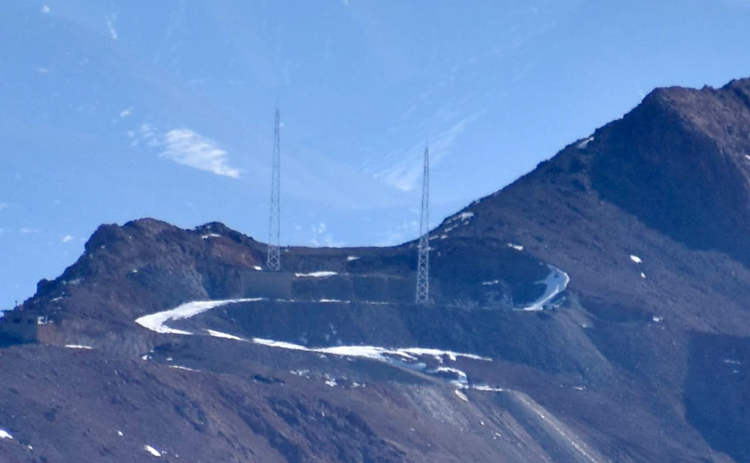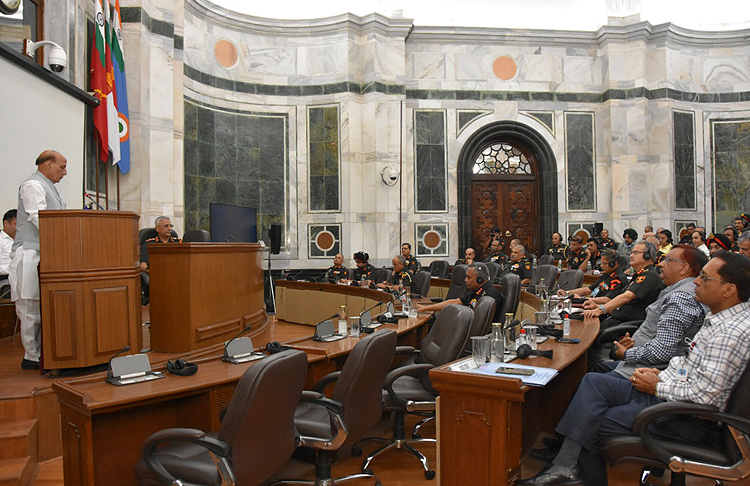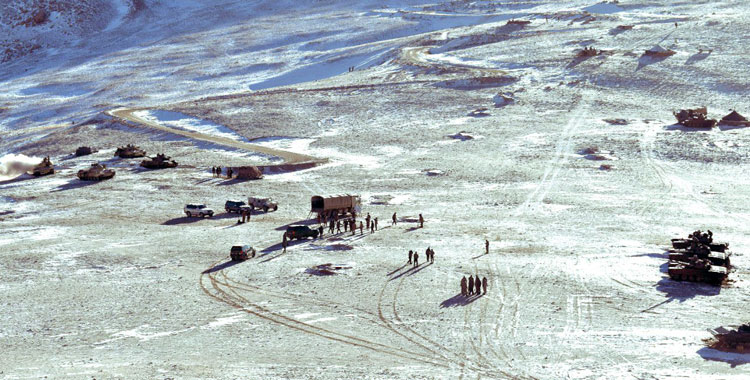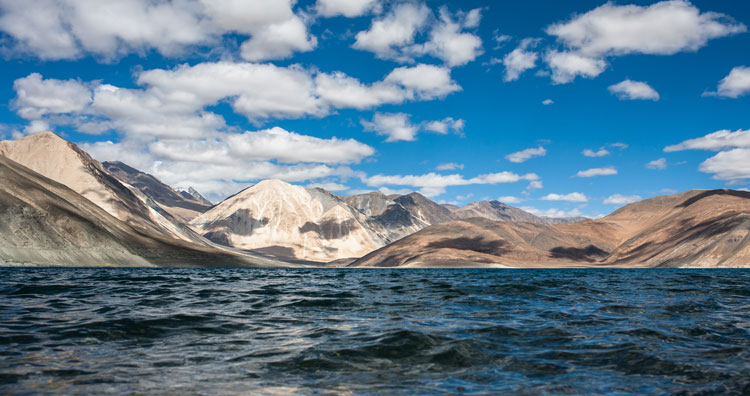INDIAN ARMED FORCES CHIEFS ON OUR RELENTLESS AND FOCUSED PUBLISHING EFFORTS

The insightful articles, inspiring narrations and analytical perspectives presented by the Editorial Team, establish an alluring connect with the reader. My compliments and best wishes to SP Guide Publications.

"Over the past 60 years, the growth of SP Guide Publications has mirrored the rising stature of Indian Navy. Its well-researched and informative magazines on Defence and Aerospace sector have served to shape an educated opinion of our military personnel, policy makers and the public alike. I wish SP's Publication team continued success, fair winds and following seas in all future endeavour!"

Since, its inception in 1964, SP Guide Publications has consistently demonstrated commitment to high-quality journalism in the aerospace and defence sectors, earning a well-deserved reputation as Asia's largest media house in this domain. I wish SP Guide Publications continued success in its pursuit of excellence.
- Operation Sindoor: Resolute yet Restrained
- India’s Operation Sindoor Sends a Clear Message to Terror and the World – ‘ZERO TOLERANCE’
- Japan and India set forth a defence cooperation consultancy framework, talks on tank and jet engines
- Terrorist Attack in Pahalgam in Kashmir: Unfolding a long surgical war against PAK
- Lt General Pratik Sharma takes over Command of Indian Army's Northern Command
De-conflicting Eastern Ladakh is Passé
We may continue military-to-military talks but any progress is unlikely unless China wants and we agree to shift our positions more west by couple of kilometres, calling them no-patrol-zones
 |
The Author is Former Director General of Information Systems and A Special Forces Veteran, Indian Army |

On April 17, 2022, Konchok Stanzin, Independent Councilor of Ladakh Autonomous Hill Development Council (LAHDC) Leh from Chushul, told media, “After completing the bridge over Pangong Tso, China has installed three mobile towers near China’s Hot Spring very close to the Indian territory. Isn’t it a concern? China has no habitation in the areas where they have installed mobile telephone towers. So, it becomes more serious. Either they want to settle people in the area or they have other reasons. We should also install 4G towers on our side. We don’t even have 4G facilities in human habitation villages. In my constituency, out of 12, 11 villages do not have 4G internet facilities. We should take it seriously. We are lagging in the communication facility. We only have one mobile tower whereas on their side, they have nine towers.”
Stanzin shared images of the towers in a tweet. He pointed out that these mobile towers could be used to observe our territory and communicate details. He also claimed that China is “doing rapid infrastructure development” on the border, urging the government to equally counter attack China’s move in terms of development.
The implications of the above are two-fold: first, the mobile towers boost the communications of the People’s Liberation Army (PLA), and; second, China can be expected to set up dual-use villages in the area, as it has already done in Bhutan, Nepal and in Arunachal Pradesh.
Stanzin shared images of the towers in a tweet. He pointed out that these mobile towers could be used to observe our territory and communicate details and urged the government to equally counter attack China’s move in terms of development.
It may be recalled that media reports of July 13, 2021 quoting security officials had revealed that China has erected concrete watchtowers with CCTV cameras “inside India-claimed lines” in Ladakh to monitor Indian troop deployment. The media report further said that according to an official of the Ministry of Home Affairs (MHA), “The watchtowers and posts erected by the Chinese overlook areas held by the Indian Army. It’s a matter of extreme concern.” The report also quoted an unnamed official of the Intelligence Bureau (IB) who said, “The Indian patrols at these friction points are outnumbered by the Chinese. In a tit for tat, the Indian Army too is erecting poles fitted out with digital cameras to monitor Chinese movements inside their occupied zones.”
Most significantly, China forced India to vacate the strategic heights of Kailash Range and the heights around Chushul which were the only leverages India had over China in Ladakh. Like fools we walked into Beijing’s trap despite having been stabbed in the back many times over. That achieved, it will be no surprise if China occupies the Kailash Range one day and declares that PLA has deployed in its “own territory”, leaving our Pundits in North Block building the narrative that Kailash Ranges was always ‘disputed’ territory – similar to the spin doctoring being done for the Depsang Plains.

On April 22, 2022, Defence Minister Rajnath Singh while addressing the Army Commander’s Conference, expressed full confidence at the way Indian troops were standing firm in the continuing military confrontation with China in Eastern Ladakh and stated that military talks will continue in order to peacefully resolve the crisis. He said, “Disengagement and de-escalation is the way forward. It is our whole-of-government approach to ensure availability of the best weapons, equipment and clothing to our troops braving extreme weather and hostile forces to defend our territory. The efforts of the Border Roads Organisation, while working under difficult conditions, have also led to a quantum improvement in the road network along the borders with both China and Pakistan.”
China forced India to vacate the strategic heights of Kailash Range and the heights around Chushul which were the only leverages India had over China in Ladakh. Like fools we walked into Beijing’s trap despite having been stabbed in the back many times over.
But the fact of the matter is that China has achieved in Eastern Ladakh what it wanted through its aggression in 2020. There is no way the PLA will now move back. The disengagement along the north bank of Pangong Tso has resulted in a no-patrol zone of 10 km, all of which is in Indian Territory and the metal road through it from the Chinese side remains intact. This disengagement was done by the PLA only to trap India into vacating the Kailash Range.

It needs to be acknowledged that in 2020, China went ahead to occupy areas that were unoccupied, and where PLA has consolidated since. Both India and China know that dislodging enemy positions in high altitude areas is not easy; it requiring greater number of troops and could result in large number of casualties. The Chinese strategy of seizing unoccupied areas is relevant to more such areas along the LAC, especially in Arunachal Pradesh and the Kailash Range in Eastern Ladakh. Latter will give tremendous advantage to the PLA together with the newly constructed bridge over the Pangong Tso.
The diplomats chose to obfuscate intrusions as ‘friction points’ without blaming China for the aggression. This encouraged China to blame India as the aggressor from the very beginning.
The fact remains that during the aggression in Eastern Ladakh last year the Chinese not only came to their 1959 claim line (which India had never recognised) but in many areas crossed over to the west of it; effectively shifting the LAC westwards into India. If the handling of the LAC by our diplomats left much to desire earlier, it touched bedrock after the PLA advance and occupation of new positions. The diplomatic advice to the government should have been to call a spade a spade and show to the world where all China had intruded across the LAC – just like the Pakistani intrusions were exposed in Kargil Sector during 1999.
Had the Ministry of External Affairs (MEA) advised the government to expose China’s blatant aggression and intrusions, government would have in all probability agreed because without any worthwhile opposition there was no danger of the government falling. Besides, the fragmented opposition noises could have been doused calling them anti-national; forcing them to join forces with the ruling dispensation for meeting the Chinese challenge.

Instead, the diplomats chose to obfuscate intrusions as ‘friction points’ without blaming China for the aggression. This encouraged China to blame India as the aggressor from the very beginning. To top this, we vacated the Kailash Range in our own territory of our own volition, losing the only leverage we had at the bargaining table.
We may continue military-to-military talks, staring at the sullen faces of PLA officials for 10-15 hours each time, as has become the norm, but any progress is unlikely unless China wants and we agree to shift our positions more west by couple of kilometres, calling them no-patrol-zones. The only benefit by continuing military-to-military talks is that our policy makers avoid admitting that China has made intrusions in our territory and overall we have lost control of about a thousand km of territory.





